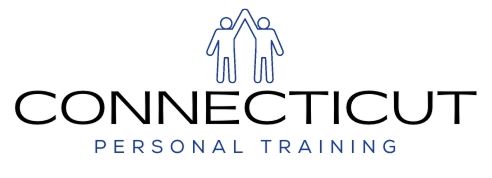Physical health is important as we grow older. Seniors can also become more mobile, stronger and feel better with the help of regular exercises. Nevertheless, it is essential to find a suitable personal trainer who is knowledgeable of the specific needs of older adults. In this guide, we will discuss how to locate a senior personal trainer to ensure a safe and effective fitness experience.
Why Seniors Need Personal Trainers
However, before jumping into finding a personal trainer, it is important to first know why a personal trainer can be valuable to seniors.
A personal trainer is able to:
Customized Exercise Programs: They develop workouts that match personal levels of fitness and medical needs.
Be Safe: Trainers learn how to identify and avoid possible injuries.
Be Motivating and Supportive: Meeting with a trainer on a regular basis will increase motivation and responsibility.
Progress Monitoring: Trainers monitor progress and make necessary adjustments to programs.
Determine Your Needs and Objectives
To find the right personal trainer, the initial thing you should do is to determine your particular needs and fitness objectives.
Just take a look at:
Health Conditions: Do I have any medical concerns or physical restrictions that must be taken into consideration?
Fitness Level: What is your fitness level and what would you like to attain?
Preference: Would you rather have group classes, individual sessions or home workouts?
Budget: What is your maximum budget to spend on personal training services?
Search Potential Trainers
When you are clear on your needs and goals, begin to research possible trainers.
The following are some of the best methods to achieve this:
Request Referrals
Friends and Family: Ask friends or family members who have had a good experience with personal trainers.
Healthcare Providers: Your physician or physical therapist can probably suggest trainers that specialize in senior fitness.
Utilize Internet Resources
Fitness Websites and Apps: Fitness websites such as MindBody, Trainerize and Thumbtack allow you to search trainers near you.
Social Media: On social networks such as Facebook and Instagram, there are usually groups or pages related to senior fitness, where you can get suggestions.
Professional Associations
National Academy of Sports Medicine (NASM): Seek out NASM-certified trainers, who may possess senior fitness-specific certifications.
American Council on Exercise (ACE): ACE certifies older adult trainers.
Check Qualifications and Experience
After getting a list of possible trainers, check their qualifications and experience.
Take the following into consideration:
Certifications: Check what certifications the trainer holds, preferably ones that relate to senior fitness, like ACE or NASM.
Experience: Seek trainers with experience in training the elderly and who are knowledgeable about age-related health conditions.
Specializations: There are trainers who might specialize in balance training, strength training or rehabilitation.
Interview
Once you have a shortlist, interview the trainers. This will aid in deciding their compatibility.
These are some of the questions to ask:
- What do you do to make your programs senior friendly?
- How do you stay safe and prevent injuries?
- Do you have any success stories with senior clients?
- What is your method of communication/motivation with clients?
Reference and Review
References: Request the trainer to provide references of existing or previous clients and ideally, they should be seniors.
Online Reviews: Seek reviews on Google, Yelp or the webpage of the trainer.
Attend a Trial Session
Most trainers will allow a free trial session or a first session at a reduced price.
It is a great opportunity to:
Try Their Style: Find out whether their style of training suits you.
Evaluate Fit: Ask yourself whether you are comfortable and understood.
Communication Assessment: Assess their ability to communicate effectively.
Think About Logistics
Logistics when selecting a personal trainer:
Convenience: Is the studio of the trainer located conveniently or he/she comes to the home?
Schedule: Do they fit into your preferred exercise times?
Transportation: Make sure you can get to and fro training sessions reliably.
Informed Choice
Once you have all the information you need, make a decision.
Select a trainer that:
Understands Your Goals: Clearly knows your fitness goals and the means to attain them.
Is Skilled and Qualified: Possesses the qualifications and experience to work with seniors.
Communicates Well: Easy to talk to and puts you at ease.
Is Available: Has convenient scheduling and location.
Have a Plan
After selecting a trainer, develop a fitness plan with him or her.
This plan must involve:
Goals: Short-term and long-term goals are clearly set.
Schedule: A regular exercise routine that suits you.
Progress Tracking: How to track your progress and make adjustments to the plan when necessary.
Be Determined and Talk to Each Other
Lastly, be dedicated to the process and be honest with your trainer. Talk about any worries or changes in your health and update your plan regularly.
To find the best personal trainer to work with seniors, you should identify your needs, do your research on possible trainers, check their qualifications and compatibility. These steps will help you find a trainer that will assist you in reaching your fitness goals safely and efficiently. Remember that the process of restoring your health and mobility is a gratifying experience and it can be significantly easier with the proper assistance.



